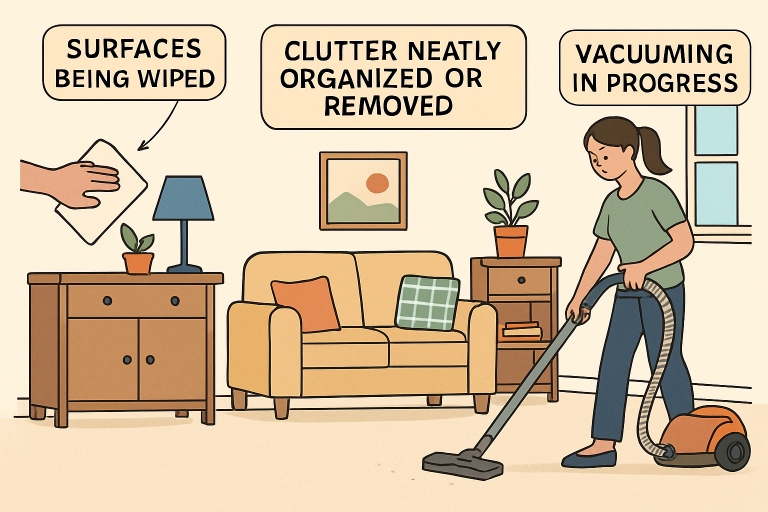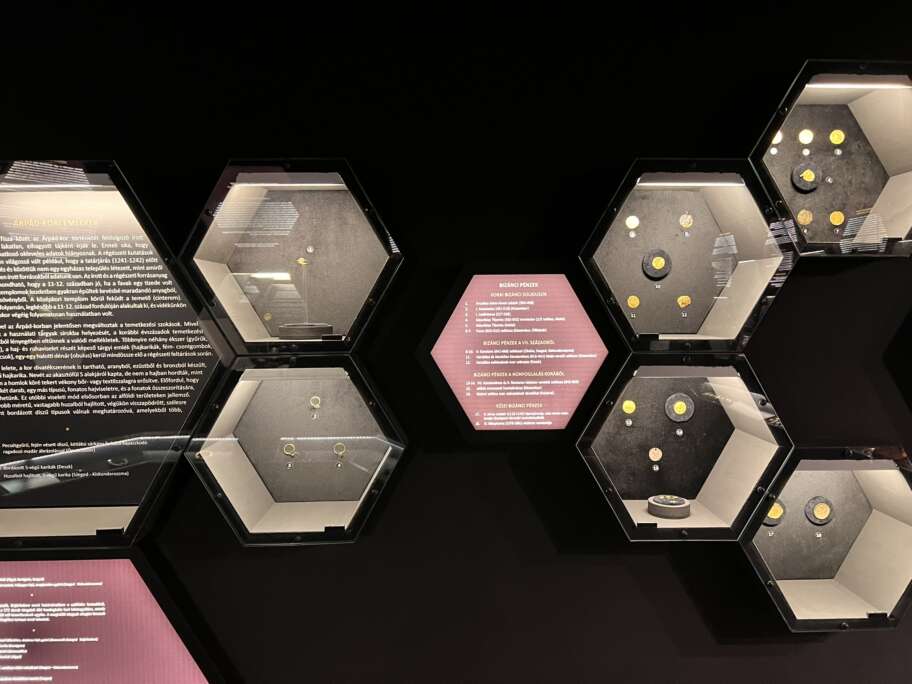Key Takeaways
- Regular cleaning and reducing clutter are the cornerstones of pest deterrence.
- Sealing entry points is critical for blocking pests from entering your home.
- Proper waste management helps remove pest-friendly food sources.
- Natural repellents are a safe and eco-friendly addition to your pest control toolbox.
- Yard upkeep and drainage protect your home by reducing nearby pest habitats.
Creating and maintaining a pest-free home is essential for the health and comfort of your living environment. Unwanted pests, ranging from rodents to insects, can contaminate food, trigger allergies, and cause property damage. To keep unwelcome visitors at bay, homeowners should employ a well-rounded prevention strategy that includes regular cleaning routines, awareness, and, when necessary, rodent control solutions in Boston for homes and commercial spaces. By following these steps, you can turn effective prevention into a lasting habit.
Proactive pest management is not only about treating infestations but also about building resilient home habits. Incorporating smart lifestyle changes and scheduled inspections can dramatically reduce pest risks and help avoid expensive damage and health concerns in the long term.
Beyond the obvious discomfort pests can cause, many can also introduce diseases and lead to property damage if left unchecked. That’s why an integrated approach that targets multiple aspects of pest prevention is most effective. Staying vigilant and educating all household members on these practices further strengthens your home’s defense.
Maintain Cleanliness and Reduce Clutter
Effective pest prevention starts with discipline in daily cleaning and organization. Crumbs, spills, and cluttered corners can quickly become feasting grounds or hiding places for pests. Be diligent with these habits:

- Wipe kitchen surfaces after meals and clear away leftovers immediately.
- Vacuum and mop floors regularly, especially in areas where food is prepared or consumed.
- Declutter storage areas, basements, or attics by discarding unneeded items such as newspapers, cardboard boxes, and old fabrics.
- Store dry goods and pet food in sealed containers.
A streamlined, organized home reduces the “real estate” pests look for, making infestations far less likely from the start.
Seal Entry Points
Pests can squeeze through tiny spaces you may not even notice. Regularly inspect your home for entry points:
- Examine window and door seals, repairing or replacing any worn or damaged weather stripping.
- Close gaps around plumbing lines, air vents, and electrical conduits with caulk or foam.
- Cover vents and chimneys with fine mesh screens.
- Check and repair damaged roof shingles and eaves to block attic access.
These measures require little time but provide substantial defense against determined invaders, such as rodents, ants, and cockroaches.
Manage Waste Properly
Garbage, recycling, and compost bins can quickly attract pests if not managed carefully. Best practices include:
- Use garbage cans with tightly fitting lids both indoors and outdoors.
- Taking out the trash frequently and maintaining clean bin interiors.
- Rinse recyclables to remove leftover food residue.
- Place compost bins away from your home’s foundation and turn them regularly.
By ensuring all refuse is secure and odor-free, you cut off key attractants for pests scouting out their next meal.
Utilize Natural Repellents
Natural solutions can enhance your pest prevention efforts without relying on harsh chemicals. Popular and effective repellents include:
- Peppermint, citronella, and eucalyptus essential oils: These can be mixed with water and sprayed along common entry points.
- Herbs: Planting mint, rosemary, basil, and lavender along window sills, doorways, or in garden beds can naturally deter bugs.
- Vinegar and lemon: A simple mixture can be used to wipe down surfaces and discourage ants and other insects.
Nontoxic and safe for people and pets, these methods supplement regular cleaning and maintenance.
Maintain Outdoor Areas
The state of your yard greatly impacts your pest prevention efforts. Implement these strategies:
- Trim shrubs, trees, and grass regularly to minimize hiding spots for rodents and insects.
- Clear leaf piles, wood stacks, and garden debris promptly.
- Keep mulch and plants several inches away from exterior walls to discourage nesting.
- Ensure all outdoor drains are clear to prevent standing water, which attracts mosquitoes and other pests.
Regular Inspections and Maintenance
Staying ahead of pest problems is easier with routine inspections. Watch for:
- Telltale signs such as nests, droppings, or chewed materials.
- New cracks, gaps, or weathering around the home’s foundation and roofline.
- Moisture-prone areas, which attract pests such as termites or silverfish.
Addressing small issues promptly with home repairs and targeted cleaning can stop a minor nuisance from becoming a costly infestation.
Educate Household Members
Pest prevention is most effective when all residents are committed. Take time to share best practices, such as keeping doors closed, promptly wiping up spills, and recognizing the signs of infestation. A well-informed family or set of housemates multiplies the effect of all your pest control efforts.
When to Seek Professional Help
If you notice persistent pests despite your efforts, or face a situation with potentially dangerous species (such as wasps, termites, or rodents), don’t hesitate to bring in professionals. Experts have access to advanced tools and targeted treatments that are both safe and effective, providing you with peace of mind and a healthier home environment.
Consistent care, household cooperation, and periodic professional support turn your home into a fortress against pests—ensuring your comfort and well-being for years to come.

Lesser-Known Curiosities About Pest Prevention
Copper mesh outlasts steel wool. While steel wool is commonly recommended for sealing entry points, it rusts within months. Copper mesh remains effective for years and rodents rarely chew through it due to its texture and conductivity.
Yellow light bulbs reduce insect attraction by 50%. Most insects navigate using UV light spectrums. Switching outdoor fixtures to yellow, amber, or warm LED bulbs significantly decreases flying pest accumulation near entries.
Diatomaceous earth works mechanically, not chemically. The fossilized algae particles scratch insect exoskeletons at a microscopic level, causing dehydration. This means pests cannot develop resistance, unlike with chemical pesticides.
Cinnamon disrupts ant pheromone trails. Ground cinnamon doesn’t just repel ants—it interferes with their chemical communication system, preventing them from forming organized foraging paths.
Bay leaves contain eucalyptol. This compound naturally repels pantry pests like weevils and moths. Placing whole bay leaves in grain containers provides months of protection without affecting food taste.
Pest activity peaks during full moons. Studies show rodent and cockroach foraging increases during lunar brightness. Scheduling inspections and treatments around these phases improves detection rates.
Dryer lint attracts nesting pests. Many people seal obvious gaps but ignore dryer vents. The lint accumulation combined with warmth creates ideal rodent and bird nesting sites within walls.
Coffee grounds deter slugs and some ants. The caffeine is toxic to mollusks in small doses, and the acidity disrupts certain ant species’ pH preferences.

Pest Control Through History
Ancient Egypt (3000 BCE): Egyptians used cats as biological pest control, elevating them to sacred status partly due to their effectiveness against grain-store rodents. They also applied natron (sodium carbonate) around food stores to desiccate insects.
Ancient Greece (400 BCE): Pliny the Elder documented using crushed cypress leaves and sulfur fumigation. Greeks positioned homes on hills with strategic wind exposure, understanding that airflow deterred mosquitoes and flies.
Medieval Europe (1200s-1400s): Rat catchers became an official profession. They used ferrets, trained terriers, and primitive traps. Ironically, the mass killing of cats during witch hunts worsened rat populations, contributing to plague spread.
China (1600s): Farmers pioneered integrated pest management by selling citrus ant colonies (Oecophylla smaragdina) to control crop pests. Bamboo bridges connected trees, allowing ants to patrol entire orchards.
Colonial America (1700s): Settlers mixed arsenic with sugar for cockroach bait—effective but deadly to children and pets. They also stuffed walls with tobacco leaves, exploiting nicotine’s insecticidal properties.
Victorian Era (1850s): Cast iron bed frames became popular specifically because bedbugs couldn’t nest in metal joints. Housewives performed “spring cleaning” rituals, scalding mattresses and whitewashing walls with lime to eliminate overwintering pests.
Early 1900s: Boric acid emerged as safer alternative to arsenic. Screens became standard in American homes after their effectiveness was proven during yellow fever outbreaks.
DDT Era (1940s-1960s): Dichlorodiphenyltrichloroethane revolutionized pest control but caused environmental catastrophe. Rachel Carson’s Silent Spring (1962) triggered the modern environmental movement.
Modern Day: Integrated Pest Management combines historical biological controls with technology—ultrasonic devices, pheromone traps, and AI-powered detection systems.

The Pollinator-Pest Control Paradox: Reconciling Agricultural Imperatives with Ecosystem Services
The Fundamental Conflict
Modern pest management operates within an inherent ecological contradiction: the chemical and biological interventions designed to suppress arthropod crop damage simultaneously compromise pollinator populations that provide $235-577 billion annually in global agricultural value. This tension intensifies as 75% of food crops depend partially or entirely on animal pollination, yet conventional pest control methods exhibit poor phylogenetic selectivity.
Neonicotinoid Neurological Disruption
Systemic insecticides—particularly neonicotinoids like imidacloprid—bind irreversibly to nicotinic acetylcholine receptors in insect nervous systems. While target pests experience mortality, sublethal exposure impairs bee navigation through disrupted mushroom body function in the protocerebrum. Field studies demonstrate 23-38% reduction in honeybee homing success at environmentally realistic concentrations (2-20 ppb), compromising colony recruitment efficiency.
Temporal Displacement Strategies
Advanced pest management protocols now incorporate phenological data to exploit temporal niches. Applying pesticides during pre-bloom or post-dusk windows—when pollinators exhibit minimal foraging activity—reduces exposure by 60-80%. However, this requires precise degree-day modeling and real-time pest threshold monitoring, infrastructure often absent in smallholder systems.
Habitat Complementation Theory
The portfolio effect suggests diversified landscape mosaics buffer against single-species pollinator decline. Integrating native flowering strips within monocultures provides refugia where natural enemies (parasitoid wasps, predatory beetles) regulate pest populations through trophic cascades, reducing pesticide dependency by 30-50% while maintaining pollinator abundance.
Microencapsulation Technology
Third-generation formulations employ biodegradable polymer matrices that release active ingredients gradually, minimizing non-target exposure. Pheromone-triggered microcapsules activated only by specific pest metabolites represent the frontier of species-specific control, though commercial scalability remains limited.
Economic Externalities
Current agricultural economics fails to internalize pollination services as production inputs. If ecosystem service depreciation were calculated into pest control cost-benefit analyses using contingent valuation methods, 40-60% of current pesticide applications would fail profitability thresholds when multi-season pollinator decline is factored.

